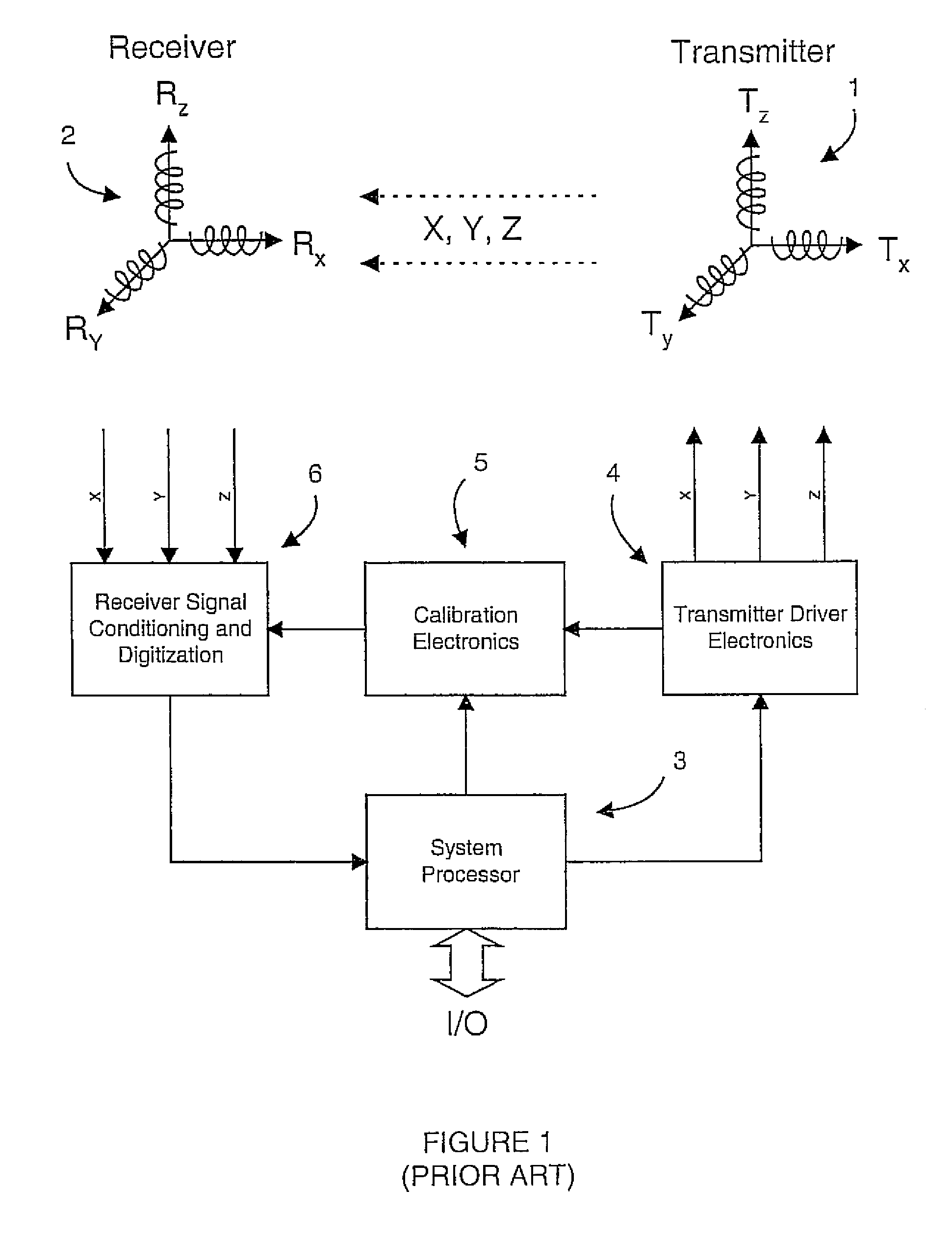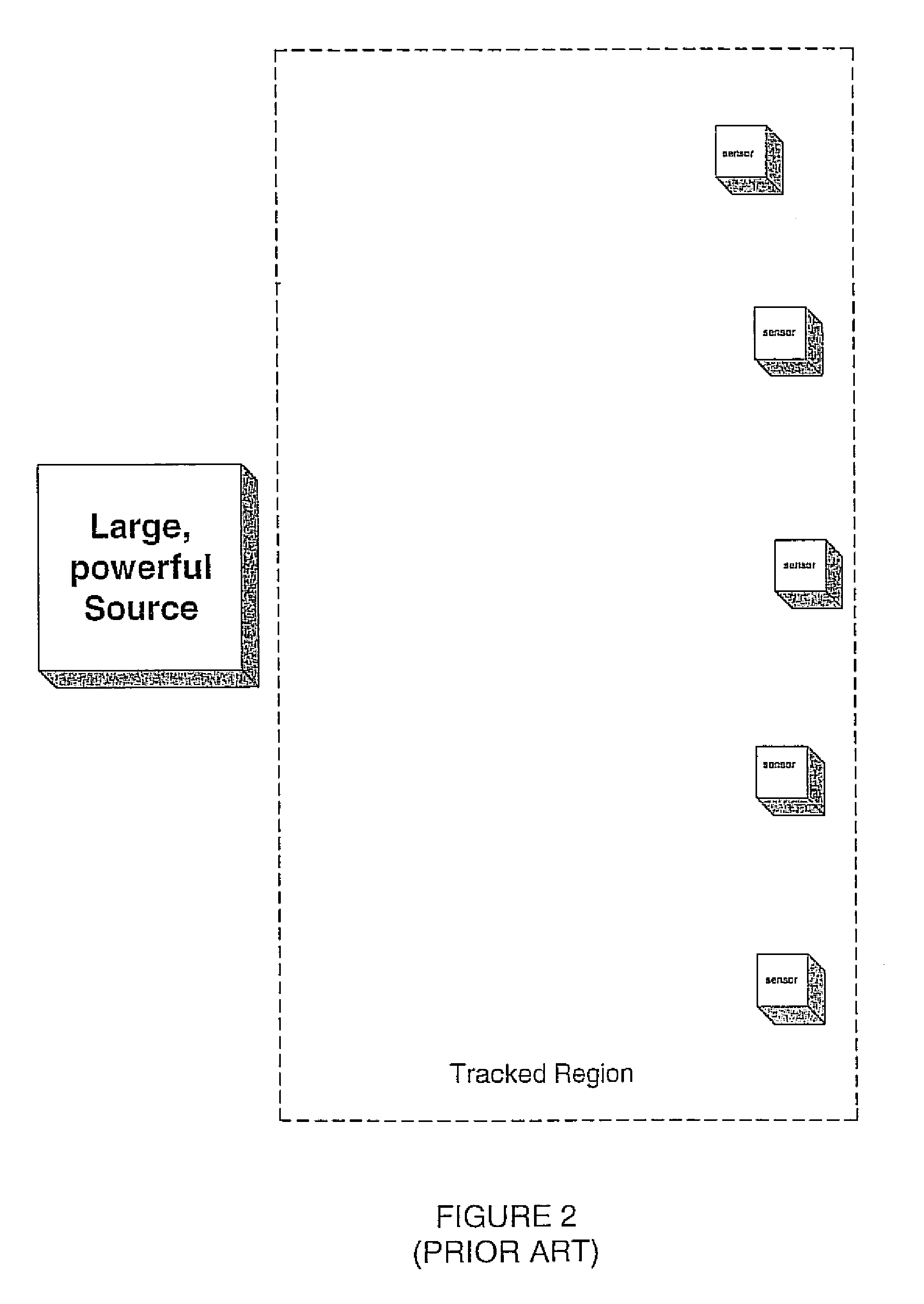AC magnetic tracking system with non-coherency between sources and sensors
a tracking system and non-coherent technology, applied in the direction of electrical/magnetic measuring arrangements, instruments, point-to-point measurements, etc., can solve the problems of error signals caused by magnetic signals, causing responses that distort data, and always difficult to achiev
- Summary
- Abstract
- Description
- Claims
- Application Information
AI Technical Summary
Benefits of technology
Problems solved by technology
Method used
Image
Examples
Embodiment Construction
[0024]If one desires a remote “sensor” to track, it really does not matter whether the source or sensor is tracked because the P&O calculation is the relative position and orientation between source and sensor. If adequate sensitivity and low noise performance can be achieved with the sensor and a means can be found to determine the source frequency / frequency set and become synchronized with this external source of orthogonal fields, then the source can be remotely disposed as a “pseudo-sensor.” Furthermore, once this is accomplished and there is no constraint placed on the source signals except that they create signals from a frequency population consistent with the system, there can be sources both wireless and wired being tracked as pseudo-sensors. Applicable wireless configurations are disclosed in U.S. patent application Ser. No. 11 / 147,977, the entire content of which is incorporated herein by reference.
[0025]The reciprocity of the tracking relationship is shown in FIG. 4, whe...
PUM
 Login to View More
Login to View More Abstract
Description
Claims
Application Information
 Login to View More
Login to View More - R&D
- Intellectual Property
- Life Sciences
- Materials
- Tech Scout
- Unparalleled Data Quality
- Higher Quality Content
- 60% Fewer Hallucinations
Browse by: Latest US Patents, China's latest patents, Technical Efficacy Thesaurus, Application Domain, Technology Topic, Popular Technical Reports.
© 2025 PatSnap. All rights reserved.Legal|Privacy policy|Modern Slavery Act Transparency Statement|Sitemap|About US| Contact US: help@patsnap.com



